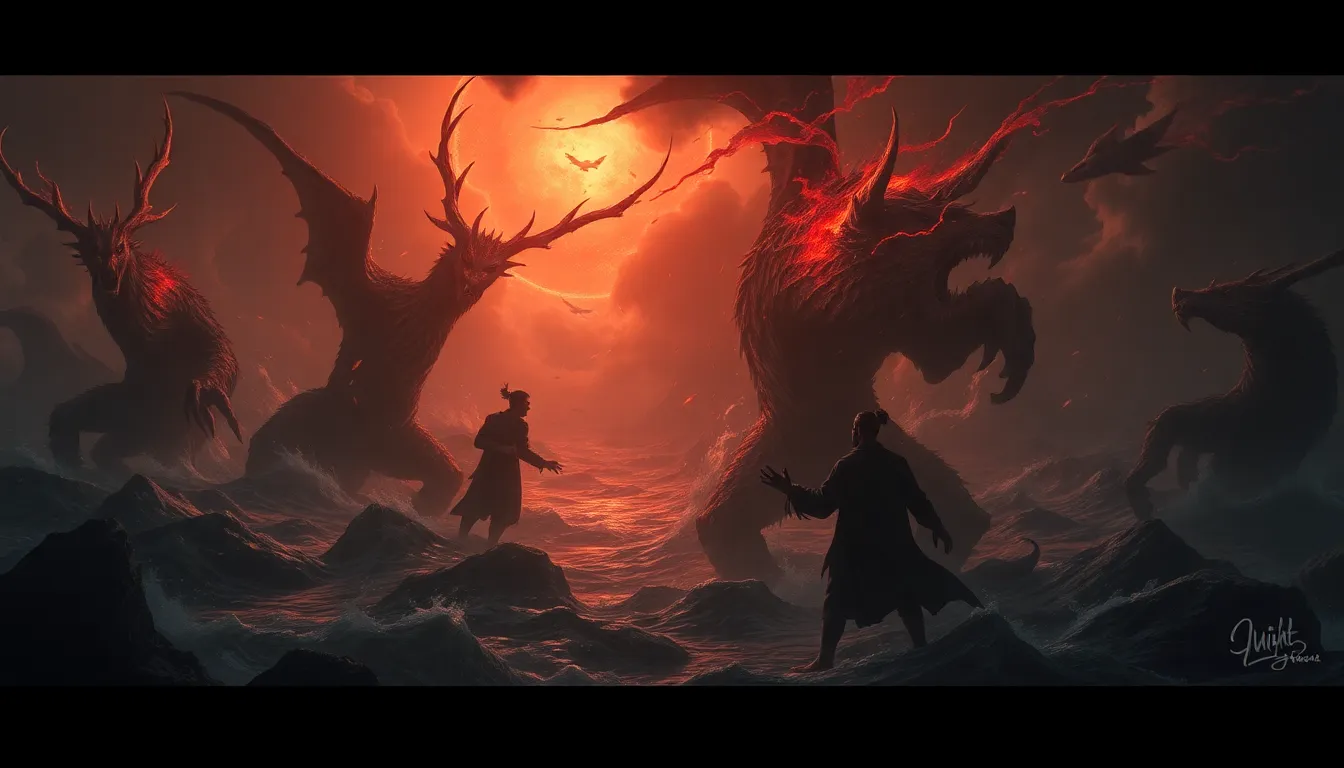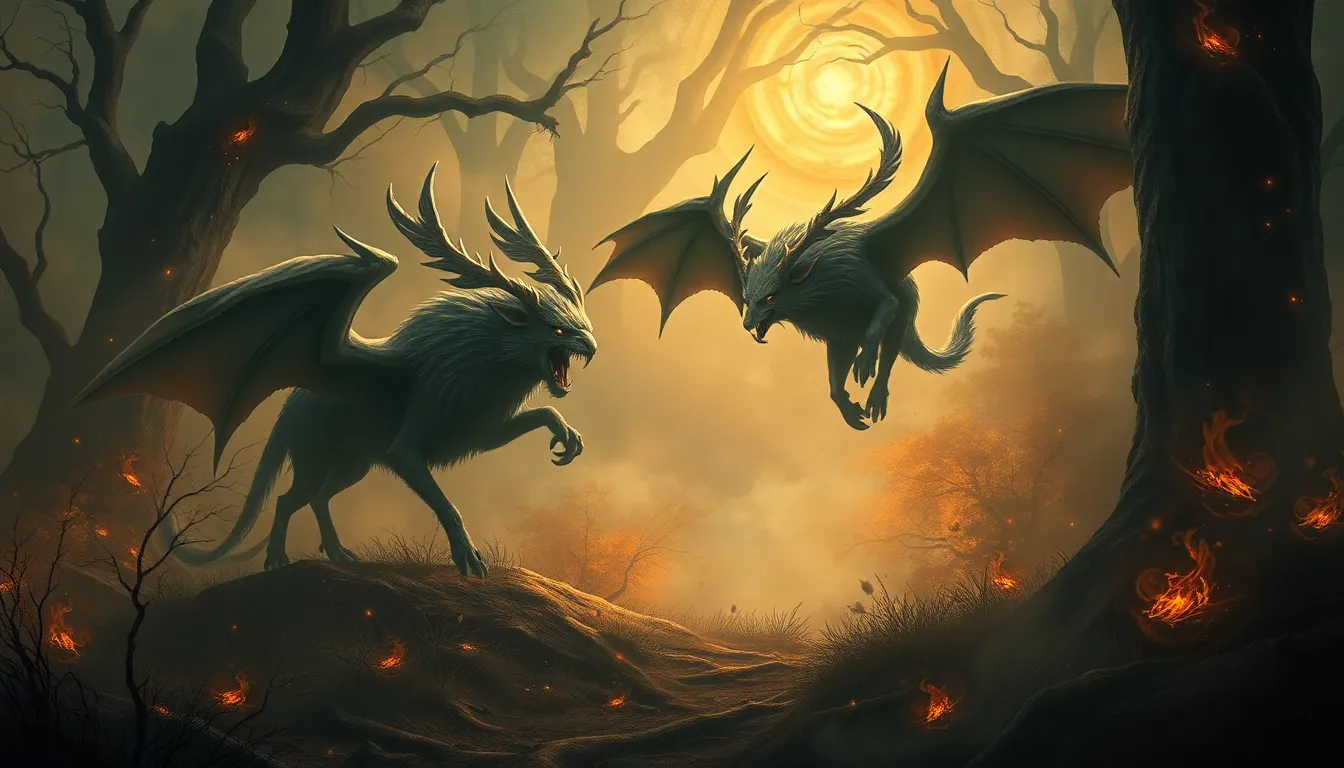The Unseen Forces: Gods, Demons, and the Flood Myths They Inspire
I. Introduction
Flood myths are powerful narratives found in cultures around the world, serving as cautionary tales or explanations for catastrophic natural events. These tales often involve divine beings—gods and demons—who play critical roles in the unfolding of these narratives. The significance of these supernatural forces reflects the values, fears, and beliefs of the societies that tell these stories. This article will explore the diverse flood myths across cultures, the roles of gods and demons within these tales, their psychological and sociopolitical implications, and how these narratives adapt in our modern context.
II. Understanding Flood Myths: A Global Perspective
A. Common themes in flood myths
Across various cultures, flood myths share several common themes:
- Divine Punishment: Many myths portray floods as a punishment from the gods for humanity’s transgressions.
- Survival and Renewal: Floods often lead to the survival of a chosen few, symbolizing rebirth and the possibility of a fresh start.
- Warning Signs: The narratives frequently include omens or warnings that precede the flood, emphasizing the need for heeding divine messages.
B. Notable flood myths from various cultures
Several prominent flood myths stand out:
- Mesopotamian Myth: The Epic of Gilgamesh features Utnapishtim, who survives a great flood sent by the gods to cleanse the earth.
- Native American Myth: The Ojibwe people tell of a great flood that was sent to cleanse the earth of evil, leading to the creation of a new world.
- Hindu Myth: In the Matsya Purana, the god Vishnu takes the form of a fish to save humanity from a catastrophic flood.
C. The role of nature and human behavior in these stories
Flood myths often reflect the relationship between nature and humans, where natural disasters are interpreted as consequences of moral failings or societal upheaval. These narratives illustrate the belief that human actions can provoke divine wrath, emphasizing the importance of living in harmony with the natural world.
III. The Divine and the Damned: Role of Gods in Flood Myths
A. Characteristics of flood gods across cultures
Flood gods are often depicted with specific characteristics:
- All-Powerful: They possess the ability to control nature and alter the course of humanity.
- Wrathful: Many flood gods display anger towards human disobedience or immorality.
- Benevolent: In some narratives, they offer salvation or guidance to a chosen few.
B. Examples of divine intervention and wrath
Divine intervention is a common theme in flood myths. For instance, in the Biblical story of Noah, God decides to flood the earth but saves Noah and his family, showcasing both wrath and mercy. Similarly, in the Epic of Gilgamesh, the god Ea warns Utnapishtim about the impending flood, emphasizing the dual nature of divine beings.
C. The portrayal of benevolence versus malevolence in flood narratives
Flood myths often juxtapose benevolent and malevolent forces. Gods such as Vishnu embody benevolence by saving humanity, while others depict malevolence through destructive floods that wipe out civilizations. This duality reflects the complexities of human nature and the moral lessons embedded within these stories.
IV. Demons and Malevolent Forces in Flood Myths
A. The concept of demons in ancient cultures
Demons are often seen as the antagonistic forces in flood myths, embodying chaos and destruction. They are typically associated with natural disasters and are believed to manipulate the elements against humanity.
B. How demons are associated with natural disasters
In many cultures, demons are blamed for natural calamities, including floods. For example, in some African traditions, water spirits or demons are thought to cause floods as a form of punishment or vengeance against humans.
C. Case studies of demon-related flood myths
One notable example is found in the mythology of the ancient Near East, where water demons like Tiamat are depicted as chaotic forces that threaten creation and order. In these narratives, divine beings must combat these malevolent forces to restore balance and protect humanity.
V. The Psychological Impact of Flood Myths
A. Collective memory and trauma in flood narratives
Flood myths often stem from collective memories of real disasters, serving as a therapeutic means to process trauma. They encapsulate shared fears and responses to catastrophic events that shape the identity of a culture.
B. The archetype of the flood as a cleansing or purifying force
Many cultures view floods as purifying forces that cleanse the earth of sin or corruption. This archetype highlights the duality of destruction and renewal, where catastrophic events pave the way for new beginnings.
C. Psychological interpretations of gods and demons in myths
The portrayal of gods and demons in flood myths can be interpreted as reflections of human psychology, representing the struggle between good and evil within ourselves. These narratives allow individuals to confront their fears and moral dilemmas through the lens of myth.
VI. Sociopolitical Contexts of Flood Myths
A. How flood myths reflect societal values and fears
Flood myths often mirror the societal values and fears of a community. They provide insight into how cultures understand morality, justice, and the natural world.
B. The use of myths in governance and control
Myths can serve as tools for governance, reinforcing social order by linking political authority with divine will. Leaders may invoke flood narratives to legitimize their rule or to instill a sense of collective responsibility among citizens.
C. Case studies of flood myths influencing political actions
For instance, in ancient Mesopotamia, rulers would often reference the Epic of Gilgamesh to emphasize their duty to maintain civilization against divine wrath, underscoring the importance of ethical governance.
VII. Modern Interpretations and Adaptations of Flood Myths
A. The resurgence of interest in ancient narratives
In contemporary society, there is a renewed interest in ancient narratives, including flood myths, as they resonate with modern existential concerns and environmental crises.
B. Flood myths in contemporary media (literature, film, art)
Flood myths have inspired a plethora of modern adaptations in various media, including:
- Literature: Novels such as “The Grapes of Wrath” echo the themes of survival amidst disaster.
- Film: Movies like “2012” and “Noah” reinterpret these ancient tales for contemporary audiences.
- Art: Artists explore flood myths through visual media, often reflecting on environmental issues.
C. The reinterpretation of gods and demons in modern contexts
In modern narratives, gods and demons are often reimagined to reflect contemporary values and concerns, such as climate change and social justice. This evolution allows these ancient tales to remain relevant in a rapidly changing world.
VIII. Comparative Analysis: Flood Myths and Their Associated Deities
A. Side-by-side comparisons of deities in different flood myths
Comparative analysis reveals fascinating similarities and differences among flood deities:
- Noah (Judaism/Christianity): Represents mercy and covenant.
- Utnapishtim (Mesopotamia): Symbolizes survival and divine favor.
- Matsya (Hinduism): Embodies the protective aspect of divinity.
B. The evolution of flood narratives through time
Flood narratives have evolved, influenced by cultural exchanges and changing societal norms. As societies have transformed, so too have their myths, adapting to new realities while retaining core themes.
C. The influence of geography and environment on these myths
The geographical context significantly shapes flood myths. Cultures situated near rivers or coastlines often have more elaborate flood narratives, reflecting their experiences with natural disasters.
IX. The Future of Flood Myths in a Changing World
A. Climate change and its impact on mythological narratives
As climate change leads to more frequent and severe flooding, new flood



